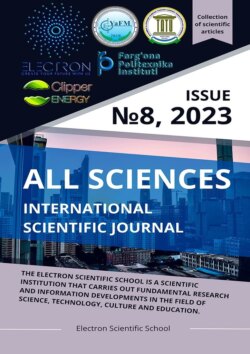Читать книгу All sciences. №8, 2023. International Scientific Journal - Ibratjon Xatamovich Aliyev - Страница 8
PHYSICAL AND MATHEMATICAL SCIENCES
INFORMATION AND MEASUREMENT SYSTEM FOR THE STUDY OF EARTHQUAKE PRECURSORS
Introduction
ОглавлениеCurrently, earthquake forecasting is one of the most pressing problems. Seismic disasters caused by earthquakes not only cause great economic damage, but also lead to the death of many people.
The main difficulty in predicting earthquakes is that an earthquake model has not been developed. In practice, there is no reliable method and device that could predict its location, time, energy or intensity, which could meet the practical requirements for both accuracy and speed. However, these requirements are divided not only by the level of knowledge about earthquakes, but also into forecasts for specific purposes, long-term forecasts or short-term forecasts, depending on different types of practical goals. At the moment, the short-term forecast is relevant. This is the basis for a clear warning of an impending disaster and taking urgent measures to reduce earthquake damage. This article presents information about a device and an information system designed to measure the parameters of a physical process that can serve for short-term forecasting.
In the patent of Uzbekistan for a utility model [1], a measuring device for short-term forecasting is proposed. In this device, charged particles and neutron fluxes coming from underground, acting on scintillation detectors, generate optical impulses, which are converted into electrical impulses using photoelectronic multipliers attached to scintillation detectors (Fig. 1). Thus, this device allows you to measure the flow of neutrons and charged particles coming from underground. Despite the insignificance of the magnitude of the flows, the nature of the change is likely to carry information about the main root cause of their occurrence. Continuous monitoring of the flow values will allow for a correlation analysis between them and between earthquake parameters. On the basis of correlation analysis, accurate methods for predicting an approaching earthquake can be created.
Fig.1. Device for measuring neutron fluxes and charged particles: a-axonometric view; b-front view in the section; coal α = 450; 1— central scintillation detectors; 2-FEU-84; 3-direction detectors, 4-FEU-125; 5-carbon absorbers; 6-neutron counters.
Such correlation analysis requires the results of very large-scale measurement work. That is, it is necessary to constantly monitor the values of the streams received by the device and record them in the appropriate information base. In addition, to study the dependence of these currents on the distance, at least three devices are necessary and they must be placed in the form of triangles at a distance of at least 200 km from each other in seismically active zones.
The earthquake parameters – magnitude, time, coordinates of the hypocenter, charged particles and neutron fluxes from the devices proposed for prediction should be simultaneously recorded in one information database in chronological order.
In addition, the parameters of all earthquakes that occur during the monitoring of neutron fluxes and charged particles, such as – time, magnitude and coordinates of the hypocenter – should be included in the information base in chronological order.
To build an adequate regression model for predicting the parameters of the upcoming earthquake, the number of experiments should be no less than the number of corresponding sensors of the complex. For example, to build a regression model for predicting hypocenter parameters, based on the number of direction sensors, the number of experiments should be at least 24, and for magnitude prediction, the number of experiments should be at least 3.
This process is the “learning” mode of the proposed measurement and information system. Having collected a sufficient amount of statistical data in this mode, it will be possible to build a mathematical model predicting the parameters of the upcoming earthquake using regression analysis of measurement results. The proposed measurement and information system will then become a complex predicting the parameters of a possible earthquake. Like any SMART system, this system always works in the “forecast-correction” mode, while the accuracy of forecasting earthquake parameters increases.
The proposed measurement and information system is based on modern means of information transmission and information and communication technologies. Below is a block diagram of one channel of the measuring device of the measuring and information system:
Fig. 2. Block diagram of the transmission of information from the measuring device
Here:
• Device to be monitored – the measuring device shown in Figure1.
• UART- universal asynchronous receiver/transmitter – universal asynchronous receiver – transmitter;
• Microcontroller – microcontroller with analog-to-digital converter;
• SPI – serial information transfer interface;
• EtherSield – Ethernet module;
• Hardware – a set of programmable measuring devices.
Fig. 3. Block diagram of the system
Here:
• Hardware – technical means of the system installed in the cities of Fergana, Tashkent, Samarkand;
• A web server is an application server that collects and processes information.
In order to implement the proposed information and measurement system, three “Software and Hardware measuring systems” have been installed in the cities of Fergana, Tashkent and Samarkand. The measurement results obtained from these complexes are entered into the information base through the web server applications on the website pribori.uz. Figure 3 shows a block diagram of the system.
Fig.– 4. Interface for visualization of system data
Figure 4 below shows the data visualization interface of the system.
